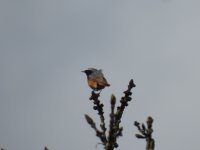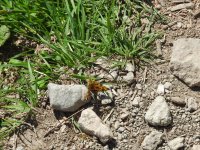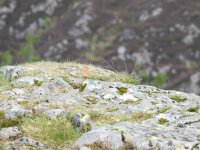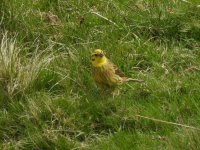Wanted to go to Suffolk but could not manage it in the next few weeks so somewhere closer to home would have been more convenient. More of a walking holiday with nature and nice landscapes rather than a specific birding trip.
Day 1 after much thinking my first stop was going to be Ullswater and a hike to Gobarrow Fell. I hiked up via Aira Force and in the woodland came across singing Pied Flycatchers and Common Redstarts lighting up the woodland. There were quite a few with a brief Wood Warbler for good measure. A family of Long Tailed Tits made plenty of noise. A fledging already this far North? Right at the edge of the woodlands a Cuckoo or two called and further up slope the first Tree Pipit of the Lakes sang. How any bird could have so much energy after a flight from Africa made me think. Further up slope a Whinchat sang briefly and a family party of recently fledged Stonechat near the peak alarmed. Ravens and Buzzards soared in the sky. Walking down from the slope few more Cuckoo revealed themselves and even more Tree Pipits. Tree Pipits called to each other lower down and a Specked Yellow moth, a first for me, fluttered around.
The walk ended with a stop at the National Trust cafe where I had a cream tea and luckily they had run out of the curried cauliflower pasty which had 900 plus calories in!
Day 1 after much thinking my first stop was going to be Ullswater and a hike to Gobarrow Fell. I hiked up via Aira Force and in the woodland came across singing Pied Flycatchers and Common Redstarts lighting up the woodland. There were quite a few with a brief Wood Warbler for good measure. A family of Long Tailed Tits made plenty of noise. A fledging already this far North? Right at the edge of the woodlands a Cuckoo or two called and further up slope the first Tree Pipit of the Lakes sang. How any bird could have so much energy after a flight from Africa made me think. Further up slope a Whinchat sang briefly and a family party of recently fledged Stonechat near the peak alarmed. Ravens and Buzzards soared in the sky. Walking down from the slope few more Cuckoo revealed themselves and even more Tree Pipits. Tree Pipits called to each other lower down and a Specked Yellow moth, a first for me, fluttered around.
The walk ended with a stop at the National Trust cafe where I had a cream tea and luckily they had run out of the curried cauliflower pasty which had 900 plus calories in!








